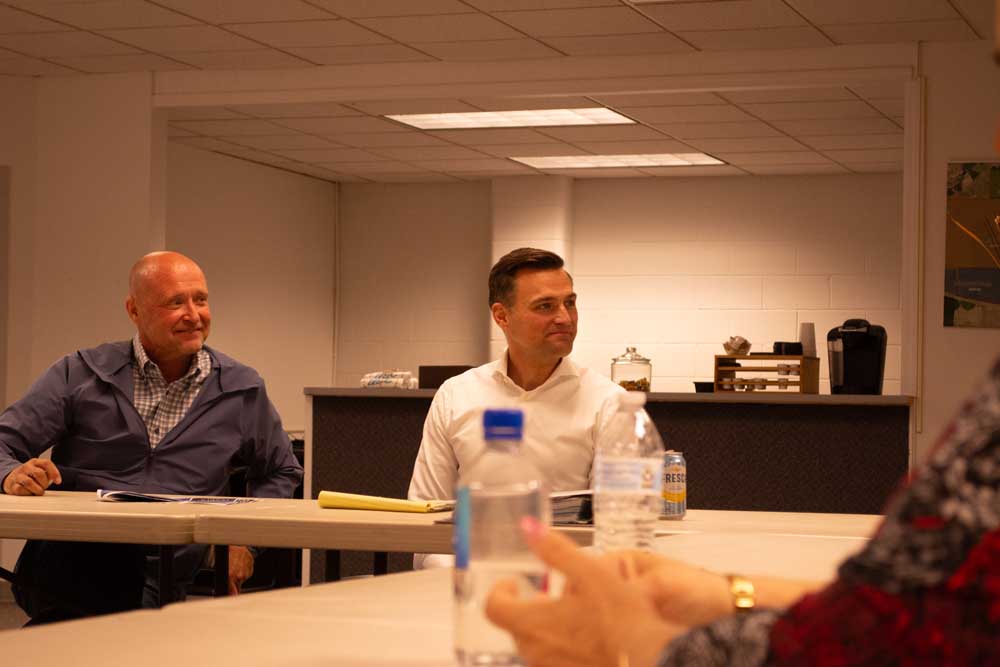Capital Chatter: Tina Kotek is listening
Published 5:00 pm Thursday, December 22, 2022

- capital chatter logo
Tina Kotek was in her element: listening closely, jotting notes, asking questions both broad and detailed, and along the way giving clues for how she will govern Oregon.
Trending
Don’t hold back, she told the small groups of health, preschool and housing leaders in McMinnville. After all, she can’t be an effective governor unless she knows what is working and what isn’t.
That is why she was in Yamhill County on Wednesday, getting a jumpstart on her commitment to visit all 36 Oregon counties during her first year as governor. Kotek will be sworn in Jan. 9 to succeed fellow Democrat Kate Brown, who assumed office in 2015 following the controversial resignation of Gov. John Kitzhaber.
“You don’t know what you don’t know. Until you talk to people doing the work, you’re not fully informed,” Kotek told another reporter and me after Wednesday’s meetings. “The challenge is for me to figure out and really hone in on what the state could be doing differently to be helpful.”
What struck me again in the small-group meetings Wednesday was a key similarity between Kotek and Kitzhaber. Despite their many differences that had played out across the Oregon Capitol, both are policy wonks. Kotek goes for the details.
Her transition team is billing her statewide tour as the “One Oregon Listening Tour.”
That, in fact, was what happened Wednesday. Kotek mostly listened. There were no monologues.
Trending
She was accompanied by her wife, Aimee Kotek Wilson, and a couple of transition team aides as they met with local leaders at the Virginia Garcia McMinnville Clinic, Head Start of Yamhill County and McMinnville city offices.
The next stop will be Douglas County in January.
In each county, the tour will be tightly focused on the three main topics of her opening gubernatorial agenda: housing and homelessness, behavioral health and addiction treatment, and schools and early learning. Are there patterns among counties? Are there regional differences?
“We’re trying to set a tone of ‘We really want to hear. We really want to listen,’” Kotek said. “We are intentionally saying we’d like to cover these types of topics because I believe it’s better to get a deeper dive on a smaller number of priorities than have very shallow conversations all day long.”
On Wednesday, she also candidly answered questions, especially about the 2023-25 state budget that she must propose by Feb. 1 – a budget that she acknowledged, “is going to be challenging.”
At Virginia Garcia, she stressed the importance of not backtracking on the state’s investments in behavioral health made during the pandemic.
Later, during the housing and homelessness discussion, she questioned whether direct allocations to cities – as proposed by the Oregon Mayors Association for the 2023 Legislature – would be a good approach.
McMinnville, the Yamhill County seat, was a logical place for Kotek to launch the listening tour. It’s fairly close to Portland and thus convenient for Kotek to visit during the week before Christmas (and for the TV stations that showed up). Although the county voted strongly for Republican gubernatorial candidate Christine Drazan, Kotek had strong support in McMinnville.
In recent years, Yamhill County made the news for turbulent politics. Less-known is its grassroots collaboration to address homelessness and other societal issues. “I’m even impressed by their level of coordination and collaboration,” Kotek said. “Wow, they are really doing it here and it’s really impressive.”
Kotek’s statewide work in the Legislature was evident both in the Project Turnkey transitional housing in McMinnville and a planned navigation center to serve the homeless – if a site can be found. That issue of available land represents another challenge facing the state, most communities and our governor-elect.




